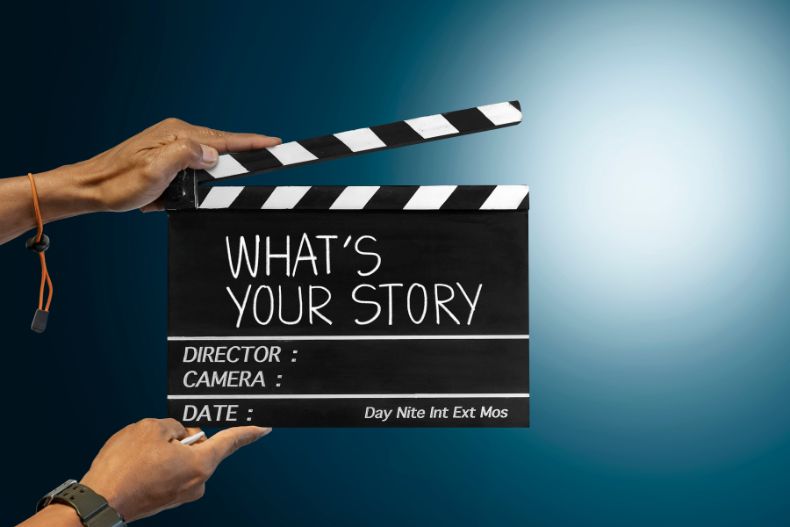Step into the vibrant world of storytelling where boundaries are shattered and imagination knows no limits. In the Content Renaissance, you are invited to embark on a journey of discovery, exploring the innovative approaches that are revolutionizing the way stories are told. From interactive narratives that captivate and engage like never before, to virtual reality experiences that transport you into immersive realms, this exploration will unveil the power of storytelling in its many forms. Witness the blurring of boundaries between mediums through transmedia storytelling, where stories seamlessly unfold across multiple platforms. Empower yourself to become a storyteller with user-generated content, and marvel at the personalized experiences crafted through data-driven narratives. In this era of collaborative creativity, the possibilities are endless. Welcome to the Content Renaissance.

Interactive Storytelling: Engaging Audiences Like Never Before
Have you ever wondered how interactive storytelling can engage audiences like never before? With the advancements in technology and the rise of digital platforms, interactive storytelling has become a powerful tool to captivate and involve audiences in a whole new way.
One of the main reasons why interactive storytelling is so effective is its ability to create an immersive and personalized experience. Instead of being passive observers, audiences can actively participate in the narrative, making choices that shape the outcome of the story. This level of engagement not only enhances the entertainment value but also creates a sense of agency and investment in the story’s unfolding.
Furthermore, interactive storytelling allows for a deeper connection between the audience and the content. By involving the audience in decision-making processes, it creates a sense of ownership and investment in the story’s outcome. This sense of involvement can lead to a more emotional and memorable experience, as the audience becomes emotionally invested in the characters and their journey.
Moreover, interactive storytelling can also provide educational benefits. By incorporating elements of interactivity, it can offer opportunities for learning and problem-solving. Audiences can engage with the story’s content in a more active and hands-on manner, allowing for a more immersive and educational experience.
Virtual Reality: Creating Immersive Narrative Experiences
Immerse yourself in a new dimension of storytelling with virtual reality, as it creates immersive narrative experiences like never before. Virtual reality (VR) technology allows you to step into a digital world and become an active participant in the story. With a VR headset, you can explore fantastical realms, interact with lifelike characters, and experience thrilling adventures firsthand.
One of the key advantages of VR is its ability to transport you into the heart of the narrative. Through the use of 360-degree videos and realistic graphics, VR creates a sense of presence and immersion that traditional storytelling mediums cannot replicate. Imagine standing on a virtual battlefield, feeling the tension and intensity of the battle unfolding around you, or diving deep into the ocean and encountering majestic marine creatures up close. These experiences are made possible through the power of VR.
Moreover, VR also offers new possibilities for storytelling techniques. Instead of being a passive observer, you can actively engage with the narrative through physical movements and gestures. You can choose your own path, make decisions that affect the outcome of the story, and truly feel like you are part of the adventure.
Transmedia Storytelling: Blurring the Lines Between Mediums
Continue your exploration of innovative storytelling approaches with transmedia storytelling, a technique that blurs the lines between different mediums to create a truly immersive and interactive narrative experience. Transmedia storytelling is all about breaking free from the constraints of a single medium and embracing the power of multiple platforms to tell a story in a more dynamic and engaging way.
By utilizing various mediums such as film, television, books, comics, video games, and social media, transmedia storytelling allows creators to expand the narrative universe and provide audiences with different perspectives and entry points into the story. Each medium contributes a unique piece of the puzzle, creating a rich and multi-layered narrative experience that goes beyond what can be achieved in a single medium.
This approach encourages audience participation and engagement, as fans can explore the story through different mediums and uncover hidden details and connections. They become active participants in the storytelling process, piecing together the narrative fragments and immersing themselves in the world of the story.
Transmedia storytelling also has the potential to reach a wider audience, as each medium has its own strengths and appeals to different demographics. It allows for greater flexibility in storytelling, accommodating different formats and catering to different preferences.
User-Generated Content: Empowering Audiences to Become Storytellers
Harness the power of user-generated content to transform audiences into storytellers. In today’s digital age, audiences are no longer passive consumers of content. They have become active participants, contributing to the narrative in unprecedented ways. Hence User-generated content has revolutionized the way stories are told, allowing individuals to share their unique perspectives and experiences. Here are three ways in which user-generated content empowers audiences to become storytellers:
- Collaboration: User-generated content encourages collaboration between creators and audiences. Through platforms like social media and online forums, audiences can engage directly with creators, providing feedback, ideas, and even contributing their own content. This collaboration blurs the lines between creator and audience, fostering a sense of ownership and shared storytelling.
- Authenticity: User-generated content offers a level of authenticity that traditional storytelling often lacks. By tapping into the real-life experiences and emotions of the audience, stories become more relatable and genuine. Audiences can share their personal stories, creating a rich tapestry of diverse voices and perspectives.
- Empowerment: User-generated content gives audiences a sense of empowerment, allowing them to shape the narrative and have their voices heard. By providing platforms and tools for content creation, audiences can express themselves creatively and become active participants in the storytelling process.
User-generated content has transformed storytelling from a one-way communication to a dynamic and interactive experience. It empowers audiences to become storytellers, blurring the lines between creator and audience and creating a new era of collaborative, authentic, and empowering storytelling.
Data-Driven Narratives: Crafting Personalized Storytelling Experiences
Craft personalized storytelling experiences by utilizing data-driven narratives to engage audiences in a more immersive and personalized way. With the abundance of data available today, storytellers can leverage this information to create narratives that resonate with individual viewers or readers. By analyzing data points such as demographics, preferences, and behavior, storytellers can craft narratives that cater to the specific interests and needs of their audience.
Data-driven narratives allow for a deeper understanding of the target audience, enabling storytellers to create content that is tailored to their unique experiences and perspectives. Through the use of personalized storytelling, audiences can feel a stronger connection to the story being told, as it speaks directly to their own lives and interests.
Additionally, data-driven narratives can enhance the immersive experience for audiences. By incorporating real-time data, such as location or weather information, into the story, storytellers can create a more dynamic and interactive experience. This personalized approach not only captivates the audience but also makes them active participants in the story, fostering a deeper engagement and emotional connection.
Collective Storytelling Experience: Tools for content optimization
According to the Surfer SEO vs Semrush SEO tool, “ SurferSEO, a cloud-based service, conducts a comprehensive analysis of your webpage by assessing more than 500 on-page signals. Additionally, it has the capability to identify optimal competitors for your business and assess them through its dedicated SERP analyzer. This functionality allows for a comparison between your website and top competitors on Google, providing insights on enhancing your site’s ranking.
Semrush stands out as an all-encompassing toolkit, featuring a robust set of over 40 tools designed to assist you in various facets of online marketing. It proves valuable for both on-page and off-page search engine optimization needs.
For understanding purposes, these both tools are great example, how content can be optimized.
Collaborative Storytelling: Harnessing the Power of Collective Creativity
How can collaborative storytelling amplify the creative power of a collective group? Collaborative storytelling allows individuals to come together and combine their unique perspectives, skills, and ideas to create a more impactful and immersive narrative experience. By harnessing the power of collective creativity, collaborative storytelling has the potential to ignite innovation and bring fresh perspectives to traditional storytelling formats. Here are three ways in which collaborative storytelling can amplify the creative power of a collective group:
- Diverse Perspectives: When multiple individuals with diverse backgrounds come together to tell a story, it opens up a world of possibilities. Each person brings their own experiences, knowledge, and cultural influences, which can lead to rich and multifaceted narratives that resonate with a wider audience.
- Shared Ownership: Collaborative storytelling fosters a sense of shared ownership among the participants. Each person feels invested in the story and actively contributes to its evolution. This shared ownership not only enhances creativity but also strengthens the bond between collaborators, leading to a more cohesive and engaging narrative.
- Collective Problem-Solving: Collaborative storytelling encourages collective problem-solving. When faced with challenges or roadblocks in the narrative, the group can pool their ideas and brainstorm innovative solutions. This collaborative problem-solving approach often leads to unexpected and exciting story developments, pushing the boundaries of creativity.











